Posté par Damien Bril, le 2 décembre 2013;
- Date limite : 31 janvier 2014
- Date et lieu du colloque : 5-7 juin 2014, Prague
Prague, June 5 – 07, 2014 Deadline-CFP: 31 janv. 2014 http://www.courtresidences.eu/index.php/events/workshops-and-colloquia/Prague2014/
Call for papers
Looking for Leisure. Court Residences and their Satellites, 1400-1700
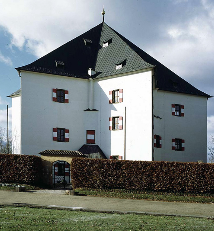 This PALATIUM conference draws attention to small buildings in residential complexes – small in size but not in importance – which were meant only for temporary, seasonal use, unlike the permanent use of the main palace. The role of the palazotto (‘small palace’) was to be a place of rest, leisure and repose, but sometimes it also took on a representative role similar to the main palace. As these ‘satellites’ were usually new buildings rather than rebuilt older structures, they offer a much clearer view of the incentives, intentions and concepts of the clients . . . → En lire plus This PALATIUM conference draws attention to small buildings in residential complexes – small in size but not in importance – which were meant only for temporary, seasonal use, unlike the permanent use of the main palace. The role of the palazotto (‘small palace’) was to be a place of rest, leisure and repose, but sometimes it also took on a representative role similar to the main palace. As these ‘satellites’ were usually new buildings rather than rebuilt older structures, they offer a much clearer view of the incentives, intentions and concepts of the clients . . . → En lire plus
Posté par Luisa Capodieci, le 1 décembre 2013;
- Date et lieu de la conférence : Jeudi 5 décembre, Paris, INHA, Salle Perrot, 18h
DARIO GAMBONI (université de Genève)
Rêveries réciproques : le rêve chez Paul Gauguin
Informé par l’observation personnelle, une probable lecture des onirologues français et un intérêt pour l’ethnologie européenne aussi bien qu’océanienne, Paul Gauguin accorde au rêve une place centrale dans son œuvre et sa réflexion. Associé dès le début des années 1880 à l’enfance, le rêve joue pour lui le rôle d’un véritable socle psychique et biologique. Il s’incarne non seulement dans les figures de dormeurs mais aussi sous les formes « paraboliques » de l’ornement et de l’image potentielle. Établissant des parallèles entre états de conscience et niveaux ontologiques, Gauguin organise une réversibilité du rapport entre fiction et . . . → En lire plus
Posté par Damien Bril, le 30 novembre 2013;
- Date limite : 20 décembre 2013
- Date et lieu du colloque : 16-19 avril 2014, Ankara
Galloping History An International Symposium
Ankara, Turkey, April 16 – 19, 2014 Deadline-CFP: 20 déc. 2013
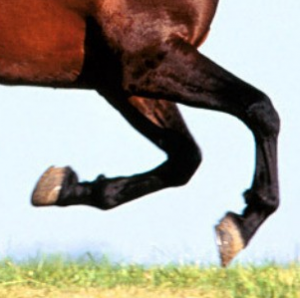 There would hardly be any exaggeration in assuming that horses have been one of the most important companions to humankind since the development of civilized societies. Horses and equine culture have played great many roles in almost all historical epochs. Thus, historical inquiry has encountered this phenomenon in a diverse spectrum of fields, including but not limited to military, social, economic, cultural, and literary aspects of human life and its historical evolution. However, since the Industrial Revolution and the technological progress it brought about, especially in transportation, horses and equine culture gradually . . . → En lire plus There would hardly be any exaggeration in assuming that horses have been one of the most important companions to humankind since the development of civilized societies. Horses and equine culture have played great many roles in almost all historical epochs. Thus, historical inquiry has encountered this phenomenon in a diverse spectrum of fields, including but not limited to military, social, economic, cultural, and literary aspects of human life and its historical evolution. However, since the Industrial Revolution and the technological progress it brought about, especially in transportation, horses and equine culture gradually . . . → En lire plus
Posté par Damien Bril, le 28 novembre 2013;
- Date limite : 2 décembre 2013
- Date et lieu du colloque : 17-19 juillet 2014, Londres
London, UK, July 17 – 19, 2014 Deadline-CFP: 2 déc. 2013 http://spacebetweensociety.org/conference/
CALL FOR PAPERS
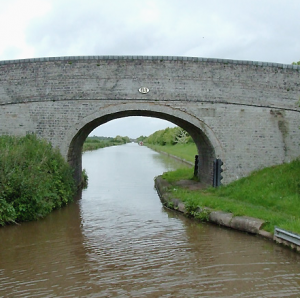 Crossing the Space Between, 1914-1945 Crossing the Space Between, 1914-1945
The 16th annual conference of the multidisciplinary society, The Space Between: Literature and Culture, 1914-1945
July 17-19, 2014, Institute of English Studies, London
The 16th annual conference of the Space Between society will explore the notion of ‘crossing’ – whether of oceans, borders, classes, genders, disciplines or genres – as it relates to literature, art, history, music, theatre, media, and spatial or material culture in any country between 1914 and 1945. From 1930s writers and intellectuals crossing the class divide to the surrealist crossing of . . . → En lire plus
Posté par Olivier Bonfait, le 25 novembre 2013;
- Date et lieu du colloque : 28-30 novembre 2013; Rome, Villa Medici, 28-30 novembre 2013; Rome, Villa Medici
Soleils baroques La Gloire de Dieu et des Princes en représentation dans l’Europe moderne
Colloque international Rome, 28-29-30 novembre 2013 organisé par l’Académie de France à Rome, avec le concours de l’université de Rouen (GRHIS-Normandie Université) et de l’université Paris-Sorbonne (Labex EHNE)
sous la direction de Frédéric Cousinié, Annick Lemoine, Michèle Virol
L’immense « Gloire » de Gian Lorenzo Bernini qui surmonte la Cattedra de Saint-Pierre de Rome est devenue l’emblème triomphant d’un « baroque » romain à vocation universelle. Sa réalisation, inédite dans ses formes, est contemporaine des innombrables cours célestes et « Gloires divines » des coupoles qui se multiplient dans la capitale de la chrétienté à partir des années 1620. Elle est annoncée par les dispositifs éphémères des célébrations des Quarante Heures des années 1630-40 où . . . → En lire plus
Posté par Sébastien Bontemps, le 21 novembre 2013;
- Date et lieu du colloque : 28-30 août 2014, Université de Genève
 APPEL A CONTRIBUTIONS 39e Colloque annuel du International Merleau-Ponty Circle ADVERSITE ET CREATION (colloque bilingue français-anglais) Université de Genève, Unité d’ histoire de l’art 28-30 août 2014 Conférenciers keynote: Vivian Sobchack (UCLA), Gottfried Boehm (Bâle) Invités: Sara Heinämaa (Helsinki), Guy Félix Duportail (Paris 1) En septembre 1951, à Genève, Maurice Merleau-Ponty donnait une conférence intitulée « L’Homme et l’adversité ». En écho à cet événement, le 39e colloque annuel du Merleau-Ponty Circle, portera sur le thème « Adversité et création », dans le but de mettre l’accent sur la situation actuelle de la création artistique, des sciences humaines, de la politique. Comme Merleau-Ponty au milieu du 20e siècle, nous sommes face au défi d’identifier les promesses et les impasses dans . . . → En lire plus APPEL A CONTRIBUTIONS 39e Colloque annuel du International Merleau-Ponty Circle ADVERSITE ET CREATION (colloque bilingue français-anglais) Université de Genève, Unité d’ histoire de l’art 28-30 août 2014 Conférenciers keynote: Vivian Sobchack (UCLA), Gottfried Boehm (Bâle) Invités: Sara Heinämaa (Helsinki), Guy Félix Duportail (Paris 1) En septembre 1951, à Genève, Maurice Merleau-Ponty donnait une conférence intitulée « L’Homme et l’adversité ». En écho à cet événement, le 39e colloque annuel du Merleau-Ponty Circle, portera sur le thème « Adversité et création », dans le but de mettre l’accent sur la situation actuelle de la création artistique, des sciences humaines, de la politique. Comme Merleau-Ponty au milieu du 20e siècle, nous sommes face au défi d’identifier les promesses et les impasses dans . . . → En lire plus
Posté par Zinaïda Polimenova, le 19 novembre 2013;
- Date et lieu de la journée d'étude : 26 novembre 2013, Paris, Galerie Colbert, sale Vasari
Le Centre de recherche HiCSA, université Paris 1 Panthéon-Sorbonne
organise le colloque La critique d’art, de la Révolution à la monarchie de Juillet : enjeux et pratiques
le 26 novembre 2013, Galerie Colbert, salle Vasari
Sous la responsabilité scientifique de Lucie Lachenal et Catherine Méneux, HiCSA, Université Paris I Panthéon-Sorbonne
L’étude de la critique d’art du XIXe siècle connaît un engouement croissant depuis une trentaine d’années et a été renouvelée notamment par une diversification des approches méthodologiques. La première moitié du siècle, si riche pour le sujet, demeure toutefois un champ de recherche à explorer plus avant. Après la Révolution, le contexte artistique se modifie peu à peu : les artistes cherchent à accéder à un nouveau statut et à davantage de . . . → En lire plus
Posté par Olivier Bonfait, le 18 novembre 2013;
- Date et lieu : samedi 30 Novembre 2013, Tours, CESR, 14h00, samedi 30 Novembre 2013, Tours, CESR, 14h00
Anne Lepoittevin soutiendra sa thèse de doctorat en histoire de l’art menée sous la direction du Professeur Maurice Brock
La statuaire très chrétienne des Sacri Monti d’Italie (1490-1680). Genèse, histoire et destin d’une invention moderne
Le jury sera composé de : Marion Boudon-Machuel, Maurice Brock, Pierre Antoine Fabre, Nadeije Laneyrie-Dagen, Philippe Morel
le samedi 30 novembre, à 14h00 au Centre d’Études Supérieures de la Renaissance, salle Rapin 59 Rue Néricault Destouches 37041 Tours
La soutenance sera suivie d’une collation qui se tiendra également au CESR
Posté par Sébastien Bontemps, le 15 novembre 2013;
- Date limite : 24 novembre 2013
- Date de parution : Juillet 2014
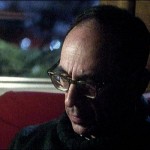 La Fondazione Memofonte intende rendere omaggio alla figura di Francis Haskell dedicandogli il n. 12 della rivista « Studi di Memofonte », la cui pubblicazione è prevista per luglio 2014. La Fondazione Memofonte intende rendere omaggio alla figura di Francis Haskell dedicandogli il n. 12 della rivista « Studi di Memofonte », la cui pubblicazione è prevista per luglio 2014.
A questo fine si chiede agli studiosi interessati di far prevenire entro il 24 novembre 2013 alla redazione della rivista (info@memofonte.it):
– titolo e un abstract del contributo che intendono proporre: il testo non dovrà superare i 2000 caratteri spazi inclusi;
– breve curriculum vitae (1000 caratteri spazi inclusi)
In caso di accettazione dell’abstract, l’articolo, in inglese o in italiano dovrà essere consegnato entro il 28 febbraio 2014 per essere
ulteriormente sottoposto all’esame del consiglio scientifico della rivista. Il testo dovrà essere di un massimo di 40.000 caratteri spazi
inclusi, con . . . → En lire plus
Posté par Sébastien Bontemps, le 4 novembre 2013;
- Date limite : 1er décembre 2013
- Date et lieu du colloque : 13-17 avril 2014, Palerme
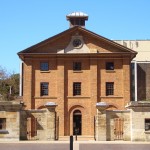 CALL FOR PAPERS Crossing boundaries: Rethinking European architecture beyond Europe International Conference The International network « European Architecture beyond Europe: Sharing Research and Knowledge on Dissemination Processes, Historical Data and Material Legacy (19th-20th centuries) », chaired by Mercedes Volait and Johan Lagae, and supported by EC funding through the COST Action IS0904, is opening calls for papers for its final Conference to take place on 13-17 April 2014 at Palermo (Italy). We invite the submission of abstracts for papers in the panel: METHODS AND METHODOLOGIES: WRITING THE HISTORIES OF EUROPEAN IMPERIAL/COLONIAL ARCHITECTURE chaired by Alex Bremner (Edinburgh University) and JoAnne Mancini (National University of Ireland Maynooth). This session seeks to explore and debate the ways in which we write (and have written) . . . → En lire plus CALL FOR PAPERS Crossing boundaries: Rethinking European architecture beyond Europe International Conference The International network « European Architecture beyond Europe: Sharing Research and Knowledge on Dissemination Processes, Historical Data and Material Legacy (19th-20th centuries) », chaired by Mercedes Volait and Johan Lagae, and supported by EC funding through the COST Action IS0904, is opening calls for papers for its final Conference to take place on 13-17 April 2014 at Palermo (Italy). We invite the submission of abstracts for papers in the panel: METHODS AND METHODOLOGIES: WRITING THE HISTORIES OF EUROPEAN IMPERIAL/COLONIAL ARCHITECTURE chaired by Alex Bremner (Edinburgh University) and JoAnne Mancini (National University of Ireland Maynooth). This session seeks to explore and debate the ways in which we write (and have written) . . . → En lire plus
Posté par Luisa Capodieci, le 4 novembre 2013;
- Date et lieu de la conférence : Jeudi 28 novembre 2013, 18h. Paris, INHA, salle Vasari
JEUDI 28 NOVEMBRE 2013 – SALLE VASARI
VICTOR STOÏCHITA (université de Fribourg), La Pharmacie de Goya
En 1779, Goya acheta une maison dans la calle del Desengaño, dans le vieux centre de la capitale espagnole. C’est là que vingt ans plus tard, il se décida à mettre en vente, en régie propre, la célèbre série des Caprices, dans la droguerie qui se trouvait au rez-de-chaussée de sa propre maison. Dans les étapes préparatoires qui menèrent des premiers essais de frontispice des Songes à la version finale du célèbre Caprice 43, Goya semble avoir nuancé voire inversé ses intentions premières, centrées initialement sur l’influence de l’astre nocturne sur les songes, en préférant en dernière instance la réflexion sur le rapport de l’imaginaire à l’état de « lune sèche », dominant . . . → En lire plus
Posté par Olivier Bonfait, le 4 novembre 2013;
- Date et lieu du colloque : 19-21 novembre 2013; Paris, INHA, 19-21 novembre 2013; Paris, INHA
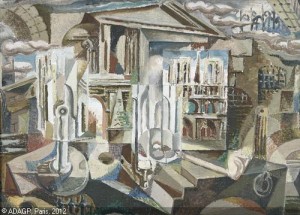 Carte postale et création – Usages, fonctions, enjeux de la carte postale dans le champ artistique (XIXe – XXIe siècles) Colloque international, 19-21 novembre 2013 Centre André Chastel, Galerie Colbert, salle Vasari Carte postale et création – Usages, fonctions, enjeux de la carte postale dans le champ artistique (XIXe – XXIe siècles) Colloque international, 19-21 novembre 2013 Centre André Chastel, Galerie Colbert, salle Vasari
Objet de curiosité dont raffolent les curieux, les collectionneurs et les artistes, la carte postale reste, en histoire de l’art, un objet à explorer, comme le prouve la rareté des catalogues et des expositions sur ce thème. Si les usages de la carte postale sont nombreux, les enjeux qu’elle porte dans le domaine de l’art et au-delà ne le sont pas moins. Depuis ses origines au XIXe siècle en Europe, la carte postale a joué un rôle patrimonial . . . → En lire plus
Posté par Olivier Bonfait, le 1 novembre 2013;
- Date limite : 4 janvier 2014, 4 janvier 2014
Figures du travail
Depuis deux siècles, le travail est devenu une composante fondamentale de la société. Cette valeur est à l’origine de bien des romans ou de films célèbres, mais semble avoir été moins illustrée dans les arts visuels. Pourtant, des représentations de la forge de Vulcain au Quarto Stato de Pelliza da Volpedo ou au Grand Paysan de Dalou, nombreuses sont les figures du travail dans les arts plastiques. Et même si, selon la légende romantique, l’art aurait plus à voir avec le génie et la résistance, qu’avec ce que le travail sous-entend d’efforts, d’apprentissage, d’opérations matérielles, une longue tradition place le travail au cœur des représentations artistiques : la première ekphrasis de l’histoire de l’art, qui raconte le bouclier d’Achille, intègre les activités laborieuses : laboureurs, moissonneurs et . . . → En lire plus
Posté par Sébastien Bontemps, le 29 octobre 2013;
- Date limite : 13 novembre 2013
- Date et lieu du colloque : 16-20 juin 2014, Einsiedeln, 16-20 juin 2014, Einsiedeln, 16-20 juin 2014, Einsiedeln
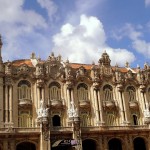 XV Baroque Summer Course, Einsiedeln, Switzerland – International XV Baroque Summer Course, Einsiedeln, Switzerland – International
Workshop Baroque and Neobaroque in the Spanish and Portuguese World
June 16-20, 2014
Deadline: November 13, 2013
The workshop aims at mapping current research on the Baroque in the
Portuguese and Spanish world and its modern and postmodern reception. The Baroque, as a seemingly universal stylistic phenomenon, connecting the early modern, the modern, and the contemporary periods, will be analyzed as a case and model of globalization of art and art history. A transcultural approach to the Baroque covers the cross-cultural impact of its style, the intercultural and local differentiation of its forms and meanings, its function as a medium of cultural hybridization and amalgamation, and a way of national identity building. . . . → En lire plus
Posté par Olivier Bonfait, le 17 octobre 2013;
- Date et lieu du colloque : 18-19 octobre, Paris, Musée du Louvre
Colloque Villes en ruines, Musée du Louvre, 17-18 octobre
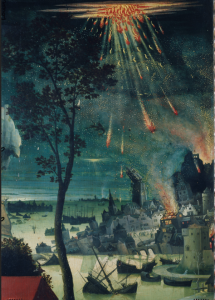 Le Louvre engage une réflexion sur l’un des thèmes privilégiés du monde contemporain : la catastrophe et ses représentations. En effet la catastrophe, en tant qu’événement marquant la mémoire et frappant l’imaginaire, est représentée dans de nombreuses œuvres du musée. Il s’agit de les interroger en invitant différentes disciplines à un dialogue commun. Chaque année la réflexion se concentrera sur une thématique spécifique : le sujet abordé en 2013 est la ville et ses ruines. Un programme de trois jours propose d’en explorer les multiples facettes, de l’Antiquité à l’époque contemporaine. Le Louvre engage une réflexion sur l’un des thèmes privilégiés du monde contemporain : la catastrophe et ses représentations. En effet la catastrophe, en tant qu’événement marquant la mémoire et frappant l’imaginaire, est représentée dans de nombreuses œuvres du musée. Il s’agit de les interroger en invitant différentes disciplines à un dialogue commun. Chaque année la réflexion se concentrera sur une thématique spécifique : le sujet abordé en 2013 est la ville et ses ruines. Un programme de trois jours propose d’en explorer les multiples facettes, de l’Antiquité à l’époque contemporaine.
Présentation D’Atlantide à Troie, de . . . → En lire plus
Posté par Sébastien Bontemps, le 16 octobre 2013;
- Date limite : 9 décembre 2013
- Date et lieu du colloque : 9-11 octobre 2014, Herzog August-Bibliothek, Wolfenbüttel
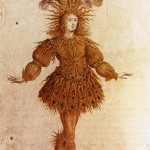 Fuerst und Fuerstin als Kuenstler. Herrschaftliches Kuenstlertum zwischen Habitus, Norm und Neigung Fuerst und Fuerstin als Kuenstler. Herrschaftliches Kuenstlertum zwischen Habitus, Norm und Neigung
Veranstalter: Rudolstädter Arbeitskreis für Residenzkultur in Zusammenarbeit mit der Herzog August-Bibliothek in Wolfenbüttel Die Tagung des Rudolstädter Arbeitskreises für Residenzkultur will das Phänomen der künstlerisch tätigen, zeichnenden, bauenden, drechselnden,
stickenden, tanzenden oder musizierenden Fürsten und Fürstinnen diachron in den Blick nehmen und auf die damit verbundenen Theorien,
Kategorien und historischen (Habitus-) Entwürfe eingehen. Die Frage, welches herrscherliche Selbstverständnis sich in der Kunstpraxis
artikuliert, an welchen Normen es ausgerichtet ist und inwiefern sich daraus ein bestimmter, zeitlich differierender herrschaftlicher Habitus
ableiten lässt, steht im Zentrum der Tagung.
HERRSCHAFT, KUNSTÜBUNG UND BILDENDE KÜNSTE
Die Sphäre der Künste gehört seit der Antike zu den wichtigsten Feldern herrschaftlicher Praxis, da . . . → En lire plus
Posté par Olivier Bonfait, le 15 octobre 2013;
- Date limite : 15 novembre 2013
- Date et lieu du colloque : 25-26 septembre 2014; Washington D.C., National Portrait Gallery
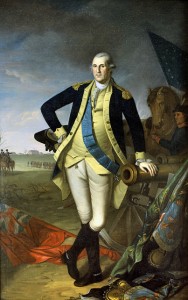 L’Art du portrait politique aux États-Unis et en France durant les périodes révolutionnaire et fédérale, circa 1776-1814 National Portrait Gallery, Washington, D.C., 25-26 septembre 2014 Appel à communication L’Art du portrait politique aux États-Unis et en France durant les périodes révolutionnaire et fédérale, circa 1776-1814 National Portrait Gallery, Washington, D.C., 25-26 septembre 2014 Appel à communication
En août 1814, les troupes britanniques sous les ordres du général Robert Ross pillèrent Washington D.C. et brûlèrent le Capitole ainsi que de splendides portraits officiels de Louis XVI et Marie-Antoinette, cadeaux offerts environ trente ans plus tôt par la monarchie française au Congrès américain. Le bicentenaire proche de cet évènement va donner aux spécialistes français et américains une rare occasion de se rencontrer et de partager leur expertise concernant des aspects de l’art du portrait en date de . . . → En lire plus
Posté par Olivier Bonfait, le 14 octobre 2013;
- Date limite : 13 décembre 2013
- Date et lieu du colloque : 16-17 mai 2014, Gand, Musée des Beaux-Arts
The Turbulent Mind: Madness, Moods and Melancholy in the Art of the Nineteenth Century Ghent, Museum of Fine Arts, 16-17 May 2014 Organised by the Research Platform XIX, the European Society for Nineteenth-Century Art and the Ghent Museum of Fine Arts, parallel with the Théodore Géricault exhibition at the Museum of Fine Arts in Ghent
 On 7 May 1824, Eugène Delacroix wrote in his diary: “I do not care for reasonable painting at all. I can see that my turbulent mind needs agitation, needs to free itself, to try a hundred different things before reaching the goal whose tyrannous call everywhere torments me. (…) If I am not quivering like . . . → En lire plus On 7 May 1824, Eugène Delacroix wrote in his diary: “I do not care for reasonable painting at all. I can see that my turbulent mind needs agitation, needs to free itself, to try a hundred different things before reaching the goal whose tyrannous call everywhere torments me. (…) If I am not quivering like . . . → En lire plus
Posté par Sarah Feron, le 10 octobre 2013;
- Date et lieu du colloque : Lundi 21 octobre et mardi 22 octobre 2013; Paris, INHA
Lundi 21 octobre et mardi 22 octobre 2013 Auditorium de la Galerie Colbert INHA 2, rue Vivienne ou 6, rue des Petits-Champs 75002 Paris ——————————————————
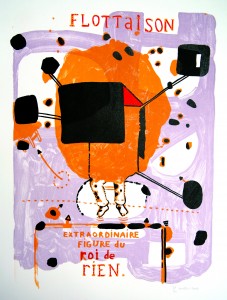
Jean-Michel Alberola, Flottaison, lithographie en couleurs, item éditions, 2009
Créées en 1963 par Jean Adhémar, alors conservateur en chef du cabinet des estampes de la Bibliothèque nationale, les Nouvelles de l’estampe sont aujourd’hui encore l’unique revue académique française sur l’estampe et la gravure. La feuille d’information des premières années a cédé la place, avec Michel Melot, à une revue qui publie des articles de fond et contribue de manière prééminente à la recherche française sur l’image . . . → En lire plus
Posté par Luisa Capodieci, le 10 octobre 2013;
- Date et lieu de la conférence : Jeudi 17 octobre 2013, 18-20h ; Paris, INHA, Auditorium
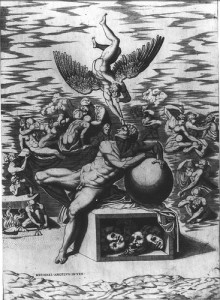 MORPHÉE. RÊVES ET RÊVERIES D’ARTISTES Cycle de conférences, Galerie Colbert INHA, Auditorium,18-20h MORPHÉE. RÊVES ET RÊVERIES D’ARTISTES Cycle de conférences, Galerie Colbert INHA, Auditorium,18-20h
JEUDI 17 OCTOBRE 2013 – AUDITORIUM, INHA
YVES HERSANT (EHESS), Rêverie sur le Sogno de Michel-Ange Inspiré peut-être par un texte de Pic de la Mirandole, le dessin de Michel-Ange qu’on intitule Le Rêve, ou Allégorie de la vie humaine (aujourd’hui au Courtauld Institute de Londres), invite l’homme à s’arracher au sommeil ainsi qu’aux plaisirs terrestres pour tourner ses regards vers le Ciel : telle est du moins, depuis Erwin Panofsky, l’interprétation la plus couramment reçue. Le propos du conférencier n’est pas tant de contester cette lecture que de la replacer dans une perspective moins moralisatrice et plus onirique.
|
Équipe Rédacteur en chef : Olivier Bonfait.
Rédacteurs : Elliot Adam (Moyen Age) ; Nicolas Ballet (XX-XXIe siècles) ; Matthieu Fantoni (musées) ; Antonella Fenech Kroke (bourses) ; Vladimir Nestorov (Lettre mensuelle)
Administrateur web : Matthieu Lett.
ancien éditeur : Pascale Dubus
anciens rédacteurs : Gautier Anceau, Sébastien Bontemps, Damien Bril ; Sébastien Chauffour ; Ludovic Jouvet ; Aude Prigot
|
 This PALATIUM conference draws attention to small buildings in residential complexes – small in size but not in importance – which were meant only for temporary, seasonal use, unlike the permanent use of the main palace. The role of the palazotto (‘small palace’) was to be a place of rest, leisure and repose, but sometimes it also took on a representative role similar to the main palace. As these ‘satellites’ were usually new buildings rather than rebuilt older structures, they offer a much clearer view of the incentives, intentions and concepts of the clients . . . → En lire plus
This PALATIUM conference draws attention to small buildings in residential complexes – small in size but not in importance – which were meant only for temporary, seasonal use, unlike the permanent use of the main palace. The role of the palazotto (‘small palace’) was to be a place of rest, leisure and repose, but sometimes it also took on a representative role similar to the main palace. As these ‘satellites’ were usually new buildings rather than rebuilt older structures, they offer a much clearer view of the incentives, intentions and concepts of the clients . . . → En lire plus













